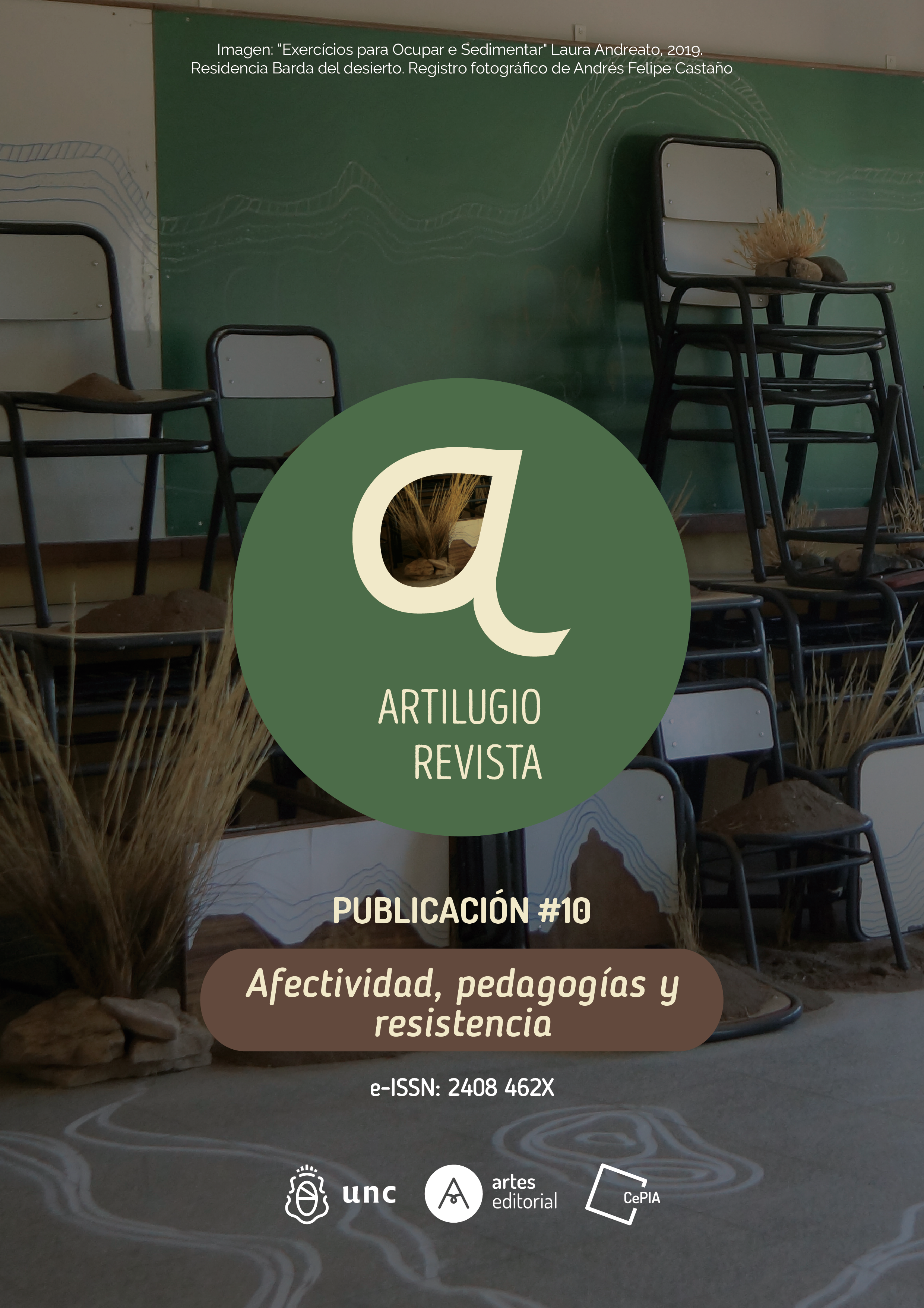Ingredients for creating a spectators' club: tools to empower and emancipate new audiences
DOI:
https://doi.org/10.55443/artilugio.n10.2024.45968Keywords:
emancipatory pedagogy, new audicences, cultural excursion, cultural mediation, independent theatreAbstract
This article focuses on the creation of new audiences as a result of a process based simultaneously on reflection and practice in cultural management. In November 2020, Vi luz y entré was founded in the city of Córdoba, which gave rise to the Club de Espectadorxs for young people between the ages of 18 and 25 who are starting out in the expectation of performing arts. We propose that when it comes to inexperienced spectators, the fact that the process of involvement (Brown, 2017) is shared among peers, allows the experience of expectation to be experienced as a social practice, that the meanings of the aesthetic experience are enhanced and that going to the theater as a cultural practice (Bourdieu, 2012) is incorporated as a habit. Finally, we reflect on whether it is possible to form spectators from a non-pedagogical point of view, based on affective ties and a sense of belonging? And what practices empower and emancipate audiences? These questions are addressed throughout the article in a reflective exercise from the practice of the case, with the aim of systematising the strategies of artistic mediation and audience involvement developed with new performing arts audiences.
Downloads
References
Beaulieu, P. (2019). Producción cultural 1 - consumo cultural 0. En C. Salguero (Comp.), Cultura independiente Córdoba. Un archivo que comienza (pp. 15-31). CABA: RGC Libros.
Bourdieu, P. (2012) [1979]. La distinción. Criterio y bases sociales del gusto. Madrid: Taurus.
Brown, A. y Ratzkin, R. (2017). Implica a tu público. Asimétrica, 2. https://asimetrica.org/leer-ver-escuchar/conectando-audiencias/implica-a-tu-publico-vol-2
Cassini, S. (2021). Comunidades culturales. Abordaje teórico-conceptual. Panorama Escena. https://escena.ar/panorama-escena/#dearflip-df_3472/1/
Desgranges, F. (2018). La pedagogía del espectador: Los públicos como integrantes del movimiento teatral. Asimétrica, 13, pp. 8-17. https://asimetrica.org/leer-ver-escuchar/conectando-audiencias/conectando-audiencias-13
Dubatti, J. (2021a). La energía de las/los espectadores, mucho más que receptores: sujetos complejos y de derechos, agentes del campo teatral, ciudadanas/os. IECE. Revista Digital, VI(11), pp. 4-9. iece-revista_digital-11.pdf (weebly.com)
Dubatti, J. (2021b). Artes conviviales, artes tecnoviviales, artes liminales: pluralismo y singularidades (acontecimiento, experiencia, praxis, tecnología, política, lenguaje, epistemología, pedagogía). AVANCES, 30. https://revistas.unc.edu.ar/index.php/avances/article/view/33515
Dubatti, J (2007). Acontecimiento convivial. En Filosofía del teatro I: convivio, experiencia, subjetividad (pp. 43-88). Buenos Aires: Atuel.
Durán, A. (2010). ¿Qué significa formar espectadores? Cuadernos del Picadero, 21. https://inteatro.ar/editorial/cuaderno-de-picadero-no21/
Margulis, M. et al. (1994). La Cultura de la Noche: La vida nocturna de los jóvenes en Buenos Aires. Buenos Aires: Biblos.
Martín, D. (2010). Las salas de teatro independiente de Córdoba. El teatro y sus espacios. Deodoro. Gaceta de Crítica y Cultura, 2, pp. 4-5.
Rancière, J. (2010). El espectador emancipado. Buenos Aires: Manantial.
Vich, V. (2014). Desculturizar la cultura: La gestión cultural como forma de acción política. Buenos Aires: Siglo XXI Editores.
Downloads
Published
Issue
Section
License
Copyright (c) 2024 Sabrina Cassini, Guadalupe Pedraza, Ximena Silbert

This work is licensed under a Creative Commons Attribution-NonCommercial-ShareAlike 4.0 International License.





































